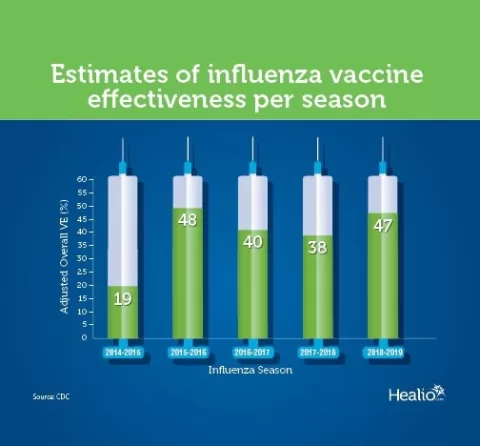For many individuals living with chronic pain, weather migraines can be a perplexing and debilitating experience. Research indicates that migraine triggers linked to weather patterns, like humidity and temperature fluctuations, can significantly impact those prone to these headaches. In fact, studies show that one-third of migraine sufferers report weather changes as a direct trigger for their symptoms. While not the sole culprit, these weather-induced headaches often prove challenging, complicating what should be a simple forecast. Understanding the connection between migraines and weather is crucial for effective management and relief.
Often described as weather-related headaches, these migraines are notoriously sensitive to environmental shifts. Many individuals experiencing these types of migraines may notice that changes in atmospheric conditions, such as sudden drops in temperature or changes in barometric pressure, can provoke intense pain. Recognizing the various factors that contribute to these episodes, including temperature and humidity, can provide deeper insights into managing migraines effectively. By paying attention to potential migraine triggers and maintaining an awareness of weather patterns, those affected can better navigate their symptoms and seek appropriate remedies.
Understanding Migraines and Weather Patterns
Migraines and weather patterns are intricately intertwined, as recent studies have shown that changes in atmospheric conditions can significantly impact migraine frequency and intensity. Research indicates that climatic triggers, such as variations in temperature and humidity, play a vital role in the onset of these debilitating headaches. For individuals who suffer from migraines, understanding these patterns can offer crucial insights into when they might experience an episode, allowing them to take preemptive measures or modify their activities accordingly. For instance, a sudden drop in temperature combined with high humidity levels can provoke significant discomfort, leading to an increased likelihood of a migraine attack.
Further examination of this relationship reveals that not all weather-related triggers affect everyone in the same way. While some individuals may be particularly sensitive to atmospheric pressure changes or extreme temperatures, others may find that their migraine triggers lie elsewhere, such as in dietary choices or emotional stressors. This variability illustrates the need for each individual to closely monitor their specific sensitivities and document patterns over time. By doing so, they can develop a personalized approach to managing their migraines that considers both weather-induced headaches and other potential triggers.
Common Weather-Induced Migraine Triggers
Various environmental factors are recognized as common triggers for migraines, and understanding these can help individuals better manage their condition. One prevalent trigger is humidity, which can greatly increase discomfort for migraine sufferers. Extreme humidity levels—whether excessive or lacking—can lead to fluctuations in how the body responds to temperature changes, making it more susceptible to migraine attacks. Additionally, sudden shifts in barometric pressure, particularly before storms, have been cited as another significant trigger for many individuals. As weather patterns shift, those with a history of migraines should be particularly vigilant about impending changes.
Sunlight exposure also plays a crucial role in triggering migraines for many individuals living with this condition. Research indicates that extended periods of bright sunlight can lead to significant discomfort and subsequent headache episodes. For instance, many individuals in areas with long summer days may experience heightened migraine risks due to prolonged brightness. This reality emphasizes the importance of protective measures, such as wearing sunglasses or finding shaded areas during peak sunlight hours, to mitigate the risk of developing migraines due to sunny weather.
Exploring Temperature as a Migraine Trigger: The Role of Heat and Cold in Migraine Episodes
Temperature fluctuations are a well-known trigger for many migraine sufferers, with both extreme heat and cold serving to exacerbate symptoms. Particularly in regions where seasonal changes are pronounced, individuals may notice an increase in migraine frequency as temperatures rise in the summer or drop in the winter months. Hot and humid days can lead to increased dehydration and discomfort, while cold fronts may cause sharp changes in barometric pressure, both contributing factors in the complex web of migraine triggers. For many, recognizing the relationship between temperature and migraines can empower them to adapt their routines and environments, helping to avoid potential episodes.
Moreover, research has shown that the rate at which temperatures fluctuate can also lead to an uptick in migraine incidents. Rapid swings from warm to cold or vice-versa can shock the body and intensify sensitivity, making it critical for individuals to stay alert to changing weather conditions. By monitoring temperature changes—especially those that occur swiftly and dramatically—migraine sufferers can take proactive steps, such as adjusting their hydration levels or retreating indoors, to help manage their symptoms effectively.
Frequently Asked Questions
How do weather changes affect migraines and weather symptoms?
Weather changes can significantly influence migraines, with over one-third of migraine sufferers reporting that their episodes are triggered by shifts in weather conditions. Factors such as temperature fluctuations, humidity, and sunlight exposure may exacerbate migraine symptoms.
What are common migraine triggers related to weather?
Common migraine triggers related to weather include extreme temperatures, high humidity, bright sunlight, and barometric pressure changes. These conditions are known to provoke migraines in susceptible individuals.
Can temperature and humidity cause migraines?
Yes, temperature and humidity can cause migraines. Research shows that extreme heat or cold, as well as high humidity levels, often correlate with increased migraine incidents, leading to a higher frequency of emergency department visits for migraine-related headaches.
Is there a link between barometric pressure and migraine attacks?
Yes, there is a link between barometric pressure and migraine attacks. A study found that significant drops in barometric pressure, such as those during storm events, can increase the likelihood of migraine episodes, particularly in individuals prone to migraines.
How can I manage weather-induced headaches?
Managing weather-induced headaches can involve several strategies: taking migraine medications as prescribed, maintaining a migraine diary to track triggers, and monitoring weather conditions to avoid potential migraine triggers, like extreme sunlight or storms.
Do sunlight exposure levels impact migraine frequency?
Yes, sunlight exposure levels can impact migraine frequency. Studies indicate that prolonged exposure to bright sunlight can increase the risk of migraines, particularly in regions with extended daylight hours.
Are weather migraines treatable with medication?
Yes, weather migraines can be treated with medications similar to those used for other types of migraines. Options include non-steroidal anti-inflammatory drugs, migraine-specific medications, and preventive treatments that can be taken in anticipation of significant weather changes.
What lifestyle adjustments can help prevent weather-related migraines?
Preventing weather-related migraines may involve lifestyle adjustments such as staying hydrated, avoiding known dietary triggers, getting adequate rest, and staying informed about the weather to anticipate potential triggers.
Why do some people experience migraines during weather changes?
Some people experience migraines during weather changes due to a combination of factors, including individual sensitivities to temperature changes, humidity, and other environmental conditions. These factors can trigger migraine episodes when combined with stress, fatigue, or dietary triggers.
How can keeping a migraine diary help with managing migraines related to weather?
Keeping a migraine diary can help individuals identify specific weather-related migraine triggers by documenting the timing, duration, and potential environmental factors surrounding each migraine episode. This information can guide proactive management strategies.
| Key Point | Details |
|---|---|
| Weather Influence | Over one-third of migraine sufferers report that weather changes can trigger their symptoms. |
| Common Triggers | Temperature changes, humidity, sunlight exposure, and barometric pressure shifts influence migraines. |
| Studies & Research | Research has yielded mixed results regarding the definitive link between weather patterns and migraine occurrences. |
| Management Strategies | Using migraine medications, keeping a migraine diary, and monitoring weather can help manage weather-related migraines. |
Summary
Weather migraines are a significant concern for many individuals suffering from headaches triggered by atmospheric changes. Understanding how weather impacts migraine occurrences can empower sufferers to manage their conditions more effectively. Recognizing triggers such as temperature fluctuations, sunlight exposure, and pressure changes can vastly improve a person’s quality of life. By employing management techniques like medication, tracking symptoms, and staying informed on weather conditions, individuals can mitigate the frequency and severity of weather-related migraine attacks.
The content provided on this blog (e.g., symptom descriptions, health tips, or general advice) is for informational purposes only and is not a substitute for professional medical advice, diagnosis, or treatment. Always seek the guidance of your physician or other qualified healthcare provider with any questions you may have regarding a medical condition. Never disregard professional medical advice or delay seeking it because of something you have read on this website. If you believe you may have a medical emergency, call your doctor or emergency services immediately. Reliance on any information provided by this blog is solely at your own risk.








